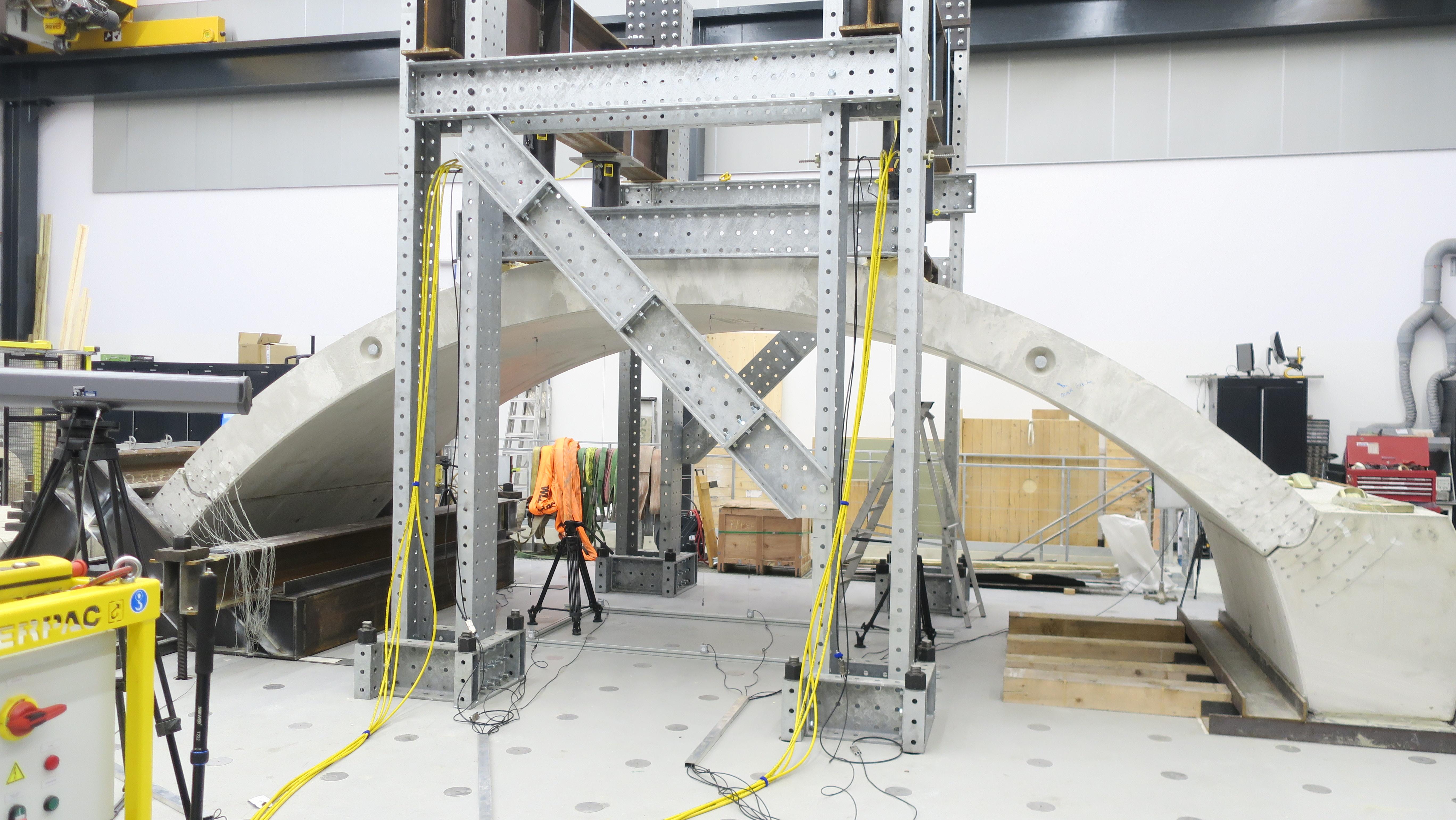
Our objective is to inform understanding of full-scale structural behaviour through experimental testing of structural components or systems approaching the sizes that they will be used in practice.
Context
The experimental testing of structural components or systems at or approaching the sizes that they will be used in practice has long been recognised as an indispensable part of civil engineering - “No account of the structures designed by Mr Brunel would be complete without a reference to the elaborate care he always took… to satisfy himself by experiment of the qualities of the materials employed, and of the correctness of the principles followed.” [1]
Theme
Understanding the behaviour of structural components and systems at the sizes that they will be used in practice is essential for safe design. While structural theory, advanced numerical modelling and appropriately designed reduced-scale testing can all provide powerful insights into full-scale behaviour, there is still no substitute for full- or approaching full-scale physical testing. Co-located with UKCRIC NRFIS testing facilities, we use state-of-the-art large structures testing capabilities to conduct non-destructive and destructive testing on a wide range of structural components and systems.
Example areas
- 20 m2 thin-shell concrete floor prototyping and testing
- 6 x 3 m CLT deep beams tested in three-point bending
- 8 m timber-steel hybrid composite T-beams tested in four-point bending
- 6 m steel portal frame apices tested in four-point bending
Academic staff |
Affiliated staff |
[1] Brunel, Isambard (1870) The life of Isambard Kingdom Brunel, Civil Engineer, London: Longmans, Green and Co.

